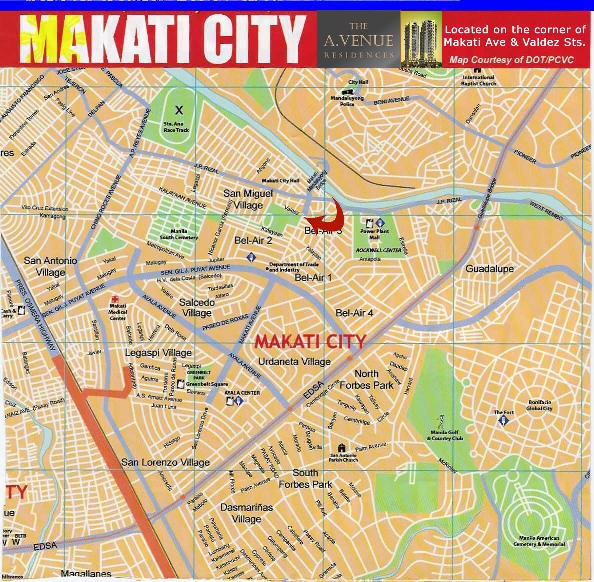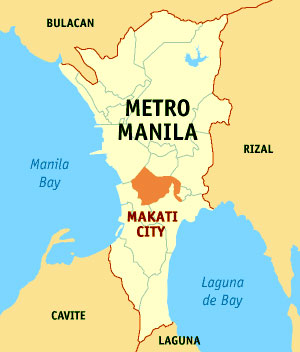
-
МјРЇСІИёСЖШИМі
-
 И№ОЫ КИОЫ Йъ ЗЛЦЎЧЯБт~ ИЎСЖЦЎ ПЙОрБюСі
И№ОЫ КИОЫ Йъ ЗЛЦЎЧЯБт~ ИЎСЖЦЎ ПЙОрБюСі 89,452
89,452 -
 [ЧЪИЎЧЩ ММКЮ] ФЋИ№ХзНК ПЉЧр 100Йш СёБтБт
[ЧЪИЎЧЩ ММКЮ] ФЋИ№ХзНК ПЉЧр 100Йш СёБтБт 48,878
48,878 -
 ИЖДвЖѓ НУГЛ - ИЎРп АјПјСЄКИ. (ЛчСј 16Рх ЦїЧд)
ИЖДвЖѓ НУГЛ - ИЎРп АјПјСЄКИ. (ЛчСј 16Рх ЦїЧд) 30,787
30,787 -
 ММКЮРЧ СіПЊСЄКИ15,527
ММКЮРЧ СіПЊСЄКИ15,527 -
 ИЖДвЖѓ БйБГ - ЕћАЁРЬЕћРЬ ПЉЧр СЄКИ14,339
ИЖДвЖѓ БйБГ - ЕћАЁРЬЕћРЬ ПЉЧр СЄКИ14,339 -
 [ЧЪИЎЧЩ ММКЮ/ИЗХК] ШЃХк МїЙк ПфБн Йз СЄКИ13,316
[ЧЪИЎЧЩ ММКЮ/ИЗХК] ШЃХк МїЙк ПфБн Йз СЄКИ13,316 -
 КИЖѓФЋРЬРЧ И№Еч И№НРРЛ КММі РжДТ ЛчСјУИ.13,130
КИЖѓФЋРЬРЧ И№Еч И№НРРЛ КММі РжДТ ЛчСјУИ.13,130 -
 ИЖДвЖѓ БйБГ - ЦХЛѓЧб ЦјЦї ПЉЧрСЄКИ12,828
ИЖДвЖѓ БйБГ - ЦХЛѓЧб ЦјЦї ПЉЧрСЄКИ12,828 -
 [ММКЮ-ЙшМБТјРх] МБЙкШИЛч РќШЙјШЃПЁПф~12,439
[ММКЮ-ЙшМБТјРх] МБЙкШИЛч РќШЙјШЃПЁПф~12,439 -
 ИЖДвЖѓ СіПЊ(ПЁИЃЙЬХИ -ИЛЖѓХз)РЧ СіЕЕ/ЧбБЙ РННФСЁ/МюЧЮИє12,109
ИЖДвЖѓ СіПЊ(ПЁИЃЙЬХИ -ИЛЖѓХз)РЧ СіЕЕ/ЧбБЙ РННФСЁ/МюЧЮИє12,109



Makati
The City of Makati (/məˈkɑЫtɪ/ mə-KAH-tee; Filipino: Makati), in the Philippines, is one of the 17 cities that make up Metro Manila, one of the most populous metropolitan areas in the world. Makati is the financial center of the Philippines. As the host of various embassies, it is also an important center for international affairs.
With a population of 529,039, Makati is the 16th largest city in the country and ranked as the 44th most densely populated city in the world with 19,336 inhabitants per km2.
According to tradition, the first governor-general of the Philippines Miguel López de Legazpi while exploring a swamp near the Pasig River, asked for the name of the place but, because of the language barrier, was misinterpreted by the Tagalogs. Pointing to the receding tide of Pasig River, the Tagalogs answered, тMakati, kumakati na,т literally meaning ebbing tide.
Makati became the financial center of the Philippines during the 1960s. Makati is home of the Philippine Stock Exchange and the Makati Business Club.
Although the city is noted for its cosmopolitan culture, it faces internal tensions owing to the wealth gap between residents, workers in and visitors to the newer part of city in the west, which contains the central business/financial district, and residents of the older part in the east, which is largely poor and where most of the slums are located.
Culture
Along the south-eastern border of Makati are the Manila Golf Club and the Manila Polo Club. The Makati Sports Club and Makati Coliseum are also notable sports landmarks.
Ayala Museum is an art and history museum located at the corner of Makati Avenue and De la Rosa Street.
Makati has many Spanish-era churches, such as the Our Lady of Guadalupe and the Nuestra Señora de Gracia (Our Lady of Grace) in the old town. The Santuario de San Antonio is a popular church for weddings. The National Shrine of the Sacred Heart is located in San Antonio Village. Makati also houses the country's only Jewish synagogue, Beth Yaacov.
The Manila South Cemetery is located at the northern part of the city.
Climate
Under the Köppen climate classification system, the city of Makati features a tropical monsoon climate. Together with the rest of the Philippines, Makati City lies entirely within the tropics. Its proximity to the equator means that the temperature range is very small, rarely going lower than 20 ТАC (68 ТАF) and going higher than 38 ТАC (100 ТАF). However, humidity levels are usually very high which makes it feel much warmer. It has a distinct, albeit relatively short dry season from January through May, and a relatively lengthy wet season from June through December.
History
Prehistory
The Philippines was inhabited by prehistoric animals from 1.7 million to 500,000 years ago. Fossil remains of stegodonts and rhinoceros were recovered in several places including areas where San Lorenzo Village and Fort Bonifacio are now located.
Early history
Namayan included the present-day parts of the National Capital Region called San Juan, Mandaluyong, Makati, Paco, and Pandacan. Namayan was older than both Tondo, which is mentioned in the Laguna Copperplate Inscription, and Maynila. Its last known ruler was Lakan Tagkan.
American occupation
By 1898, Spain ceded the Philippines to the United States after the former's defeat in the Spanish-American War. In 1901, the Americans declared the whole land south of Pasig River, including the town of San Pedro de Macati, down to Alabang a U.S. Military Reservation; thus establishing Fort McKinley which now widely known as the Fort Bonifacio. That same year, the whole town, with a population of 25,000, was incorporated from Manila to the province of Rizal. In February 28, 1914, the The Philippine Legislature passed Act 2390, shortening the name San Pedro de Macati to simply Makati. In 1930s, the first airport in Luzon, Nielsen Field, opened in what is now the Ayala Triangle.
Post-World War II
Urbanization
After the World War II, the town grew rapidly, and the real estate property boomed. The first centrally planned communities were established in the 1950s with the help and support of the Ayala family, and since the 1970s, Makati has been the undisputed financial and commercial capital, the once worthless swampland becoming prime real property. Its role as the nation's financial capital could be traced to these years.
In 1975, Makati was separated from Rizal province along with Caloocan, Malabon, Navotas, Quezon City, Marikina, San Juan, Pasig, Mandaluyong, Pateros, Taguig, Pasay City, Parañaque, Las Piñas, and Muntinlupa, to become part of the National Capital Region as a component town.
In 1980s, Makati has also figured prominently in the political history of the Filipino. The community was one of the cradles of the revolt against Spanish colonial rule, and following the assassination of Ninoy Aquino in 1983, the epicenter of the protest movement against the dictatorship of President Ferdinand E. Marcos, which known historically as the People Power Revolution. After the revolution and the downfall of the Marcosт 20-year presidential regime, Corazon C. Aquino, the wife of the deceased senator Aquino, became the new and first female president of the Republic of the Philippines and probably Asia. After the death of Mayor Nemesio Yabut during the People Power Revolution, she appointed Jejomar Binay as the acting mayor of the town of Makati and was elected as mayor in 1987.
Cityhood
By January 2, 1995, Makati became an independent city by virtue of Republic Act 7854 and in the June 30, 1998, The Lone District of Makati City was separated and divided into 2 districts. Lone district Rep. Joker Arroyo became the representative of the first district, while Senator Agapito Aquino was elected representative of second district. Elenita Binay served for only three years (one term) as the first and only female city mayor so far.
By the start of the 21st century, the city was once again highlighted in media due to the political revolt against the government of then-president Gloria Macapagal-Arroyo. In July 27, 2003, the so-called Oakwood Mutiny was staged at the Oakwood Hotel by the Magdalo soldiers.
An accidental methane gas explosion ripped apart a section of the Glorietta Mall occurred on October 19, 2007 at 1:30 PM, killing 11 people.
In a continuation of events stemming from the Oakwood Mutiny, 25 Magdalo officers led by Sen. Antonio Trillanes IV and Brig. Gen. Danilo Lim overtook the Manila Peninsula Hotel on November 29, 2007 in what has been referred to as the Manila Pen Siege.
- ЁЄ
- ЁЄ
- ЁЄ
- ЁЄryWvMVxeet
- ЁЄryWvMVxeet
- ЁЄryWvMVxeet\'\"\\(
- ЁЄryWvMVxeetщ\'\"\\(
- ЁЄryWvMVxeet
- ЁЄryWvMVxeet
- ЁЄryWvMVxeet
- ЁЄryWvMVxeet
- ЁЄryWvMVxeet
- ЁЄryWvMVxeet
- ЁЄryWvMVxeet
- ЁЄryWvMVxeet














 ЧЪРкДхФФ ОпАЃЛѓДу ПРЧТ
ЧЪРкДхФФ ОпАЃЛѓДу ПРЧТ 12ГтПЌМг МвКёРкИИСЗ 1РЇ
12ГтПЌМг МвКёРкИИСЗ 1РЇ
 ГЛАд ИТДТ ОюЧаПј УЃБт
ГЛАд ИТДТ ОюЧаПј УЃБт
 ИЎОѓ ЧаБГ ЙцЙЎБт
ИЎОѓ ЧаБГ ЙцЙЎБт
 СжИЛПЁ ГЛАЁ ОЕ КёПыРК?
СжИЛПЁ ГЛАЁ ОЕ КёПыРК? УжАэАЁМККё РЬКЅЦЎ СёБтБт
УжАэАЁМККё РЬКЅЦЎ СёБтБт
 ЧіСіПЁМЕЕ ЧЪРкДхФФ!
ЧіСіПЁМЕЕ ЧЪРкДхФФ! ЧіСіПЁМ АЁДЩЧб
ЧіСіПЁМ АЁДЩЧб









 ЧЪРк ЦЏБо Ч§ХУ! ФСНУОюСі МКёНК
ЧЪРк ЦЏБо Ч§ХУ! ФСНУОюСі МКёНК
































